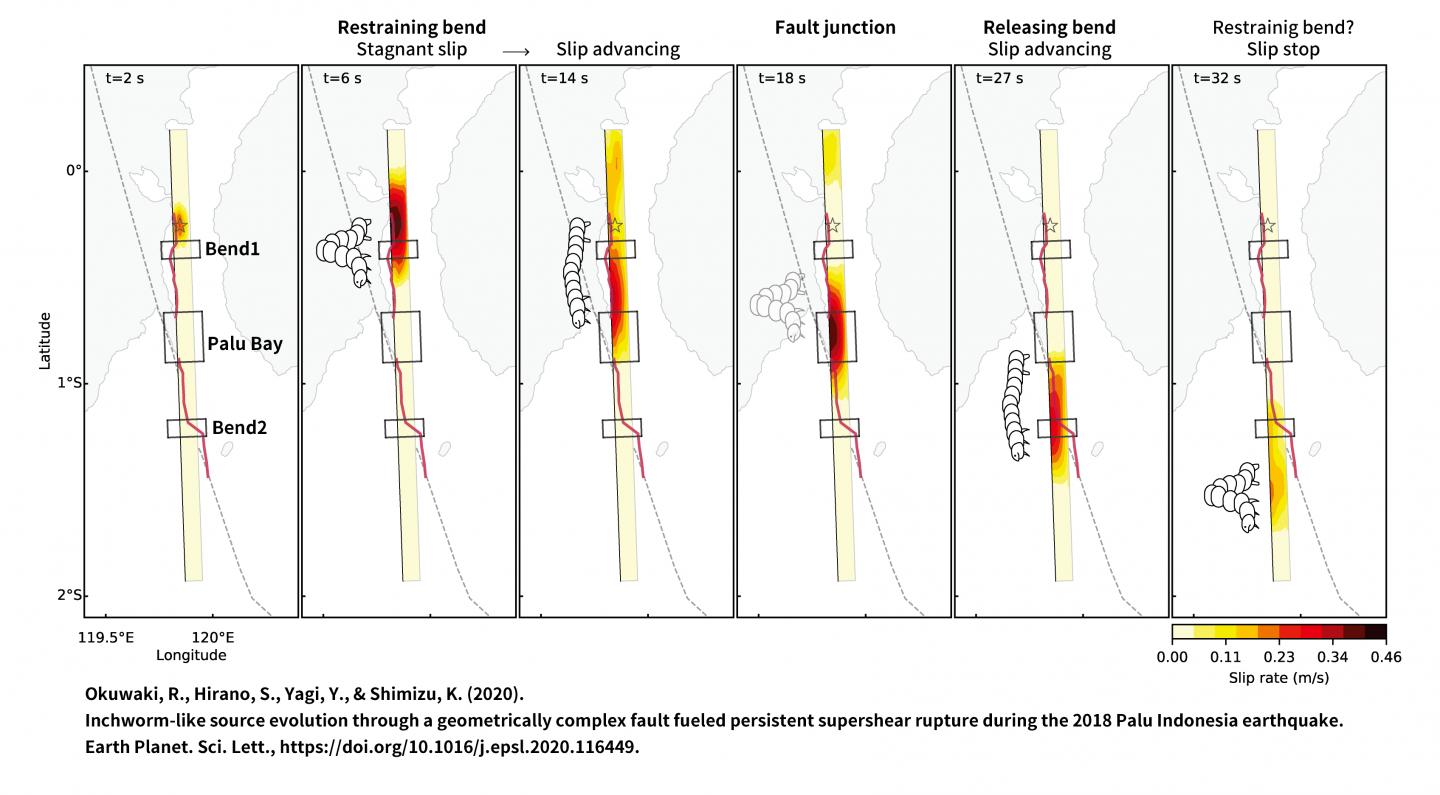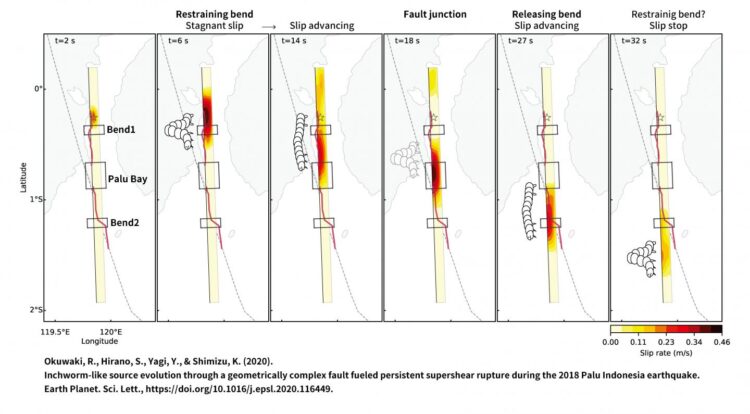University of Tsukuba researchers report “inchworm-like” slip evolution of supershear rupture along the Palu-Koro fault during the 2018 Palu earthquake in Indonesia, showing the effect of complex fault geometry on rupture propagation

Credit: University of Tsukuba
Tsukuba, Japan – Earthquakes are often imagined as originating from a single point where the seismic waves are strongest, the hypocenter underground or the epicenter at the Earth’s surface, with seismic energy radiating outward in a circular pattern. But this simplified model fails to account for the complex geometry of the actual fault systems where earthquakes occur. The real situation may be much more complex–and more interesting. In some remarkable cases, a phenomenon called “supershear” rupture can occur, where the earthquake rupture propagates along the fault at a speed faster than the seismic waves themselves can travel–a process analogous to a sonic boom.
In a new study published in Earth and Planetary Science Letters, researchers at the University of Tsukuba investigated a case of supershear rupture, the 2018 Palu earthquake (moment magnitude: 7.6) in Sulawesi, Indonesia, and its relationship with the complex geometry of the fault system.
Study co-author Professor Yuji Yagi explains, “We used globally observed teleseismic wave data and performed finite-fault inversion to simultaneously resolve the spatiotemporal evolution of slip and the complex fault geometry.”
The results of this analysis showed that the propagation of supershear rupture of the Palu-Koro fault southward from the earthquake’s epicenter was sustained by a pattern of repeated delay and advancement of slip along the fault, associated with the fault system’s complex geometry. Areas with particularly high slip rates, referred to as “slipping patches,” were identified near the epicenter as well as 60, 100, and 135 km south of the epicenter. In addition, three distinct episodes of rupture after the process initiated were distinguished, with delays in the advancement of the slipping patches between them.
Tracing the surface rupture of the earthquake showed two major bends in the earthquake fault, 10-25 km south of the epicenter and 100-110 km south of the epicenter. Supershear rupture persisted along this geometrically complex fault.
As lead author Professor Ryo Okuwaki describes, “Our study shows that the geometric complexity of a fault can significantly influence the velocity of rupture propagation. Our model of the 2018 Palu earthquake shows a zigzag pattern of slip deceleration and acceleration associated with bends in the fault, which we have named inchworm-like slip evolution. We propose that the geometric complexity of a fault system can promote persistent supershear rupture, enhanced by repeated inchworm-like slip evolution.”
These findings may have significant implications regarding assessment of future earthquake impacts and related disasters. For example, the authors suggest that the slipping patch they detected beneath Palu Bay may have contributed to generation of the 2018 Palu tsunami, which added to the devastation of the earthquake.
###
Media Contact
Naoko Yamashina
[email protected]
Related Journal Article
http://dx.





